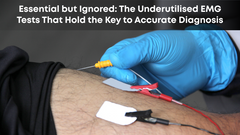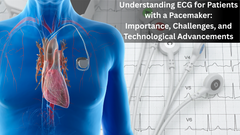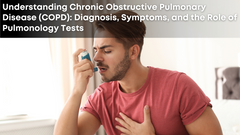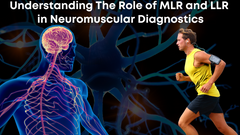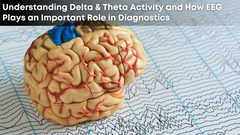Enhancing Emergency Care with EtCO2 Monitoring
In the fast-paced world of emergency medicine, every second counts. The ability to quickly assess and respond to a patient’s condition can be the difference between life and death. One of the most crucial tools in this high-stakes environment is the monitoring of end-tidal carbon dioxide (EtCO2). As technology continues to evolve, the integration of EtCO2 monitoring into emergency vehicles and portable monitors is becoming increasingly essential. Not only does it enhance the quality of care provided in pre-hospital settings, but it also plays a pivotal role in improving patient outcomes. This blog will explore the significance of EtCO2 monitoring in emergency care and highlight how Clarity Medical, an innovator in the healthcare technology space, has developed India’s own EtCO2 probes to deliver superior results.
Understanding EtCO2 Monitoring
End-tidal carbon dioxide (EtCO2) monitoring refers to the measurement of carbon dioxide concentration at the end of an exhaled breath. This measurement provides real-time information about a patient’s ventilation, perfusion, and metabolic status. Typically expressed in millimeters of mercury (mmHg), EtCO2 values can give healthcare providers a snapshot of how well a patient is ventilating, how effectively their blood is circulating, and whether their metabolic processes are functioning properly.
> Ventilation: EtCO2 is a direct indicator of ventilation efficacy. Low levels of EtCO2 may suggest hyperventilation or respiratory depression, while high levels can indicate hypoventilation or respiratory failure.
> Perfusion: Changes in EtCO2 can reflect alterations in blood flow. A sudden drop in EtCO2 might signal a decrease in cardiac output, which could be a sign of a life-threatening condition such as cardiac arrest.
> Metabolism: EtCO2 monitoring can also reveal metabolic disturbances. For example, elevated EtCO2 levels might occur in conditions that increase metabolic rate, like sepsis or fever.
The Role of EtCO2 Monitoring in Emergency Medicine
The application of EtCO2 monitoring in emergency settings is vast and diverse. It is particularly useful in the following scenarios:
> Cardiac Arrest: During resuscitation, EtCO2 monitoring serves as a valuable tool for assessing the effectiveness of chest compressions. Studies have shown that higher EtCO2 levels during cardiopulmonary resuscitation (CPR) are associated with better outcomes, including a higher likelihood of return of spontaneous circulation (ROSC).
> Airway Management: In emergency situations where intubation is required, EtCO2 monitoring helps confirm the correct placement of the endotracheal tube. A sudden drop in EtCO2 levels after intubation may indicate tube displacement or obstruction.
> Sedation and Analgesia: EtCO2 monitoring is critical when administering sedation or analgesia in emergency settings. It helps detect early signs of respiratory depression, allowing for prompt intervention before oxygen levels become critically low.
> Trauma and Shock: In cases of trauma or shock, EtCO2 levels can provide insight into a patient’s circulatory status. A significant drop in EtCO2 may signal poor perfusion, prompting immediate action to support the patient’s cardiovascular system.
> Transport Monitoring: EtCO2 is invaluable during the transport of critically ill patients. Portable EtCO2 monitors can be used in ambulances to continuously assess a patient’s respiratory status, ensuring that any changes are detected and managed promptly.
Benefits of Installing EtCO2 Monitors in Emergency Vehicles
The integration of EtCO2 monitors in emergency vehicles is a game-changer for pre-hospital care. Here are some of the key benefits:
> Rapid Assessment: EtCO2 monitoring provides immediate feedback on a patient’s respiratory and circulatory status, allowing paramedics to make swift, informed decisions. This is especially critical in time-sensitive situations such as cardiac arrest, trauma, or respiratory failure.
> Enhanced Patient Safety: By continuously monitoring EtCO2 levels during transport, paramedics can quickly detect and respond to changes in a patient’s condition. This reduces the risk of adverse events and improves the overall safety of the patient.
> Improved Outcomes: Early detection of respiratory or circulatory compromise allows for timely interventions, which can significantly improve patient outcomes. For example, in cardiac arrest, maintaining optimal EtCO2 levels during CPR is linked to better survival rates.
> Efficient Airway Management: In the chaotic environment of an emergency vehicle, confirming correct intubation can be challenging. EtCO2 monitoring provides an objective and reliable method for ensuring that the airway is secured, reducing the risk of complications.
> Portability and Ease of Use: Modern EtCO2 monitors are designed to be compact, portable, and user-friendly, making them ideal for use in the confined space of an ambulance. They are also robust enough to withstand the rigors of pre-hospital care.
Clarity Medical’s Innovation: India’s Own EtCO2 Probes
In a market often dominated by foreign products, Clarity Medical has made significant strides by developing India’s own EtCO2 probes. These probes, which have been in use since 2007, represent a major milestone in the country’s medical technology landscape.
Key Features of Clarity Medical’s EtCO2 Probes:
> Accuracy: Clarity Medical’s EtCO2 probes are engineered to provide precise measurements of end-tidal CO2 levels, ensuring that healthcare providers have the reliable data they need to make critical decisions.
> Durability: The probes are built to withstand the harsh environments often encountered in emergency care, including high humidity, temperature fluctuations, and physical shocks.
> Cost-Effectiveness: By manufacturing these probes locally, Clarity Medical has been able to offer a cost-effective solution without compromising on quality. This makes advanced EtCO2 monitoring accessible to a wider range of healthcare providers, particularly in resource-limited settings.
> Ease of Integration: The probes are compatible with a wide range of monitors and devices, making it easy for healthcare providers to incorporate them into existing systems.
Conclusion
EtCO2 monitoring is an indispensable tool in emergency medicine, offering real-time insights into a patient’s respiratory, circulatory, and metabolic status. The installation of EtCO2 monitors in emergency vehicles not only enhances patient safety but also improves outcomes by enabling rapid and informed decision-making.
Clarity Medical’s innovation in developing India’s own EtCO2 probes is a testament to the company’s commitment to advancing healthcare technology. By providing accurate, durable, and cost-effective solutions, Clarity Medical is helping to elevate the standard of care in emergency medicine, both in India and beyond.
As the demand for high-quality pre-hospital care continues to grow, the role of EtCO2 monitoring in emergency vehicles and portable monitors will only become more critical. With the right tools and technology, healthcare providers can deliver better, faster, and more effective care, ultimately saving more lives.





